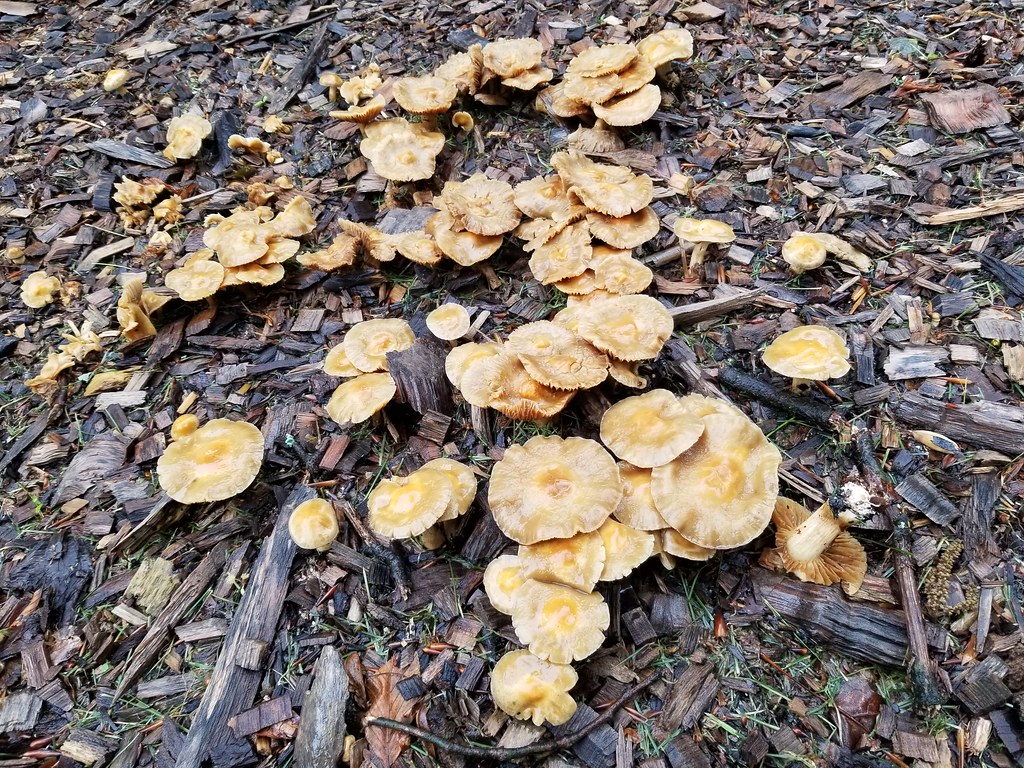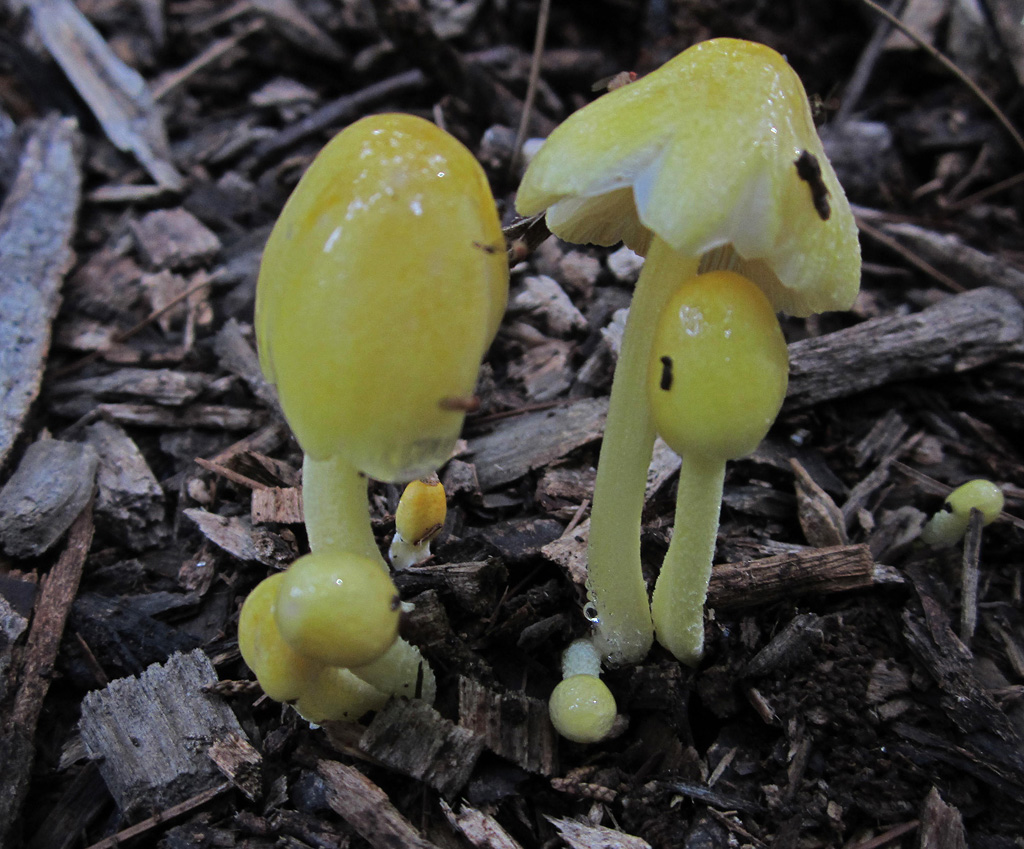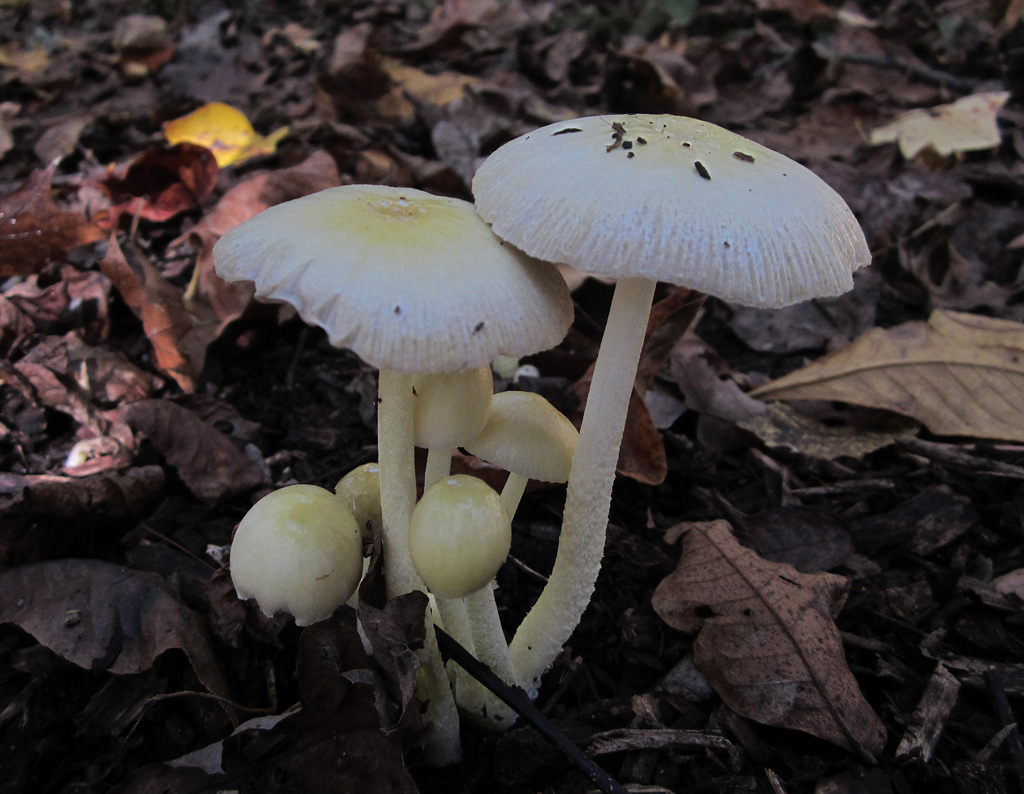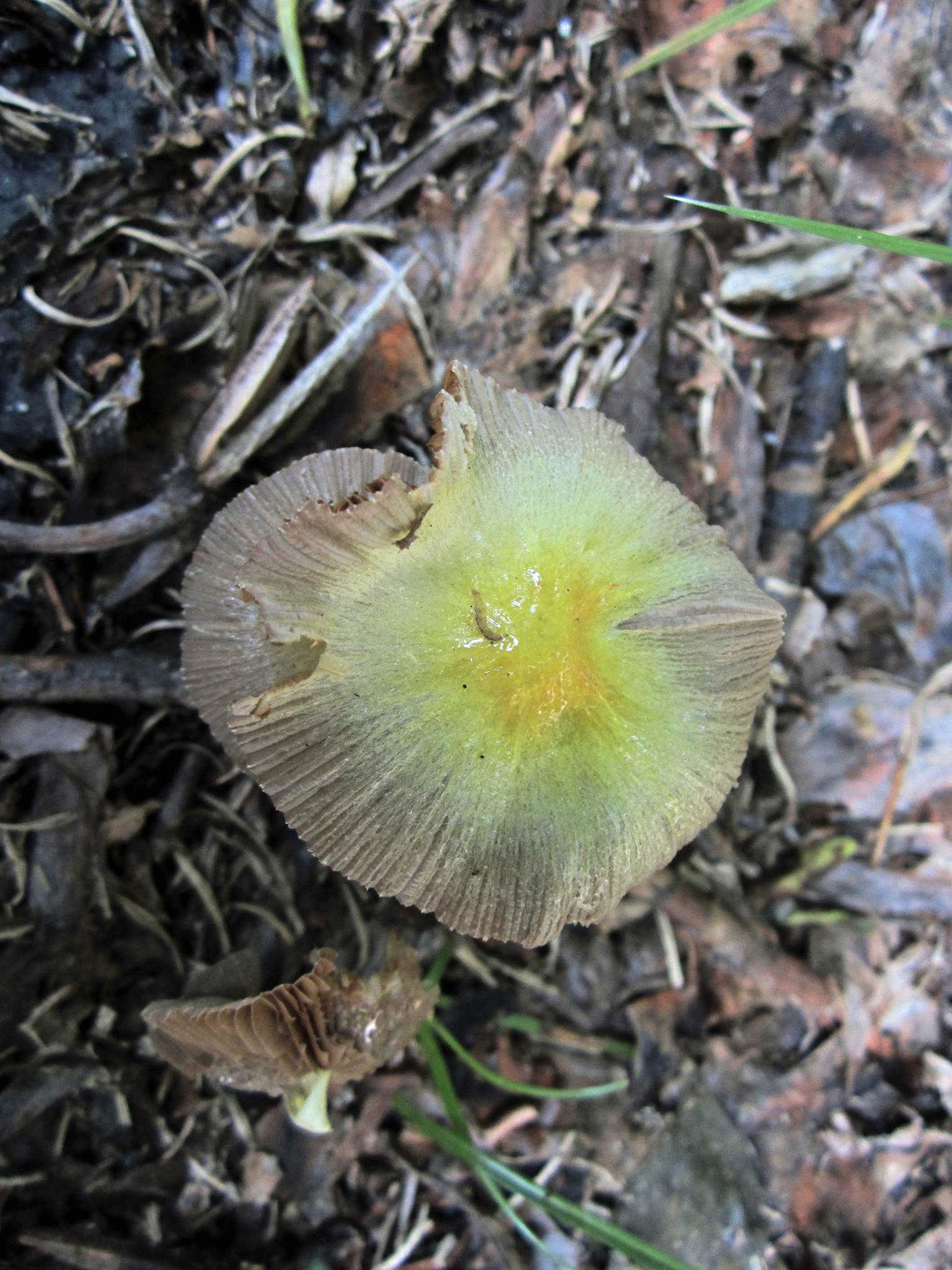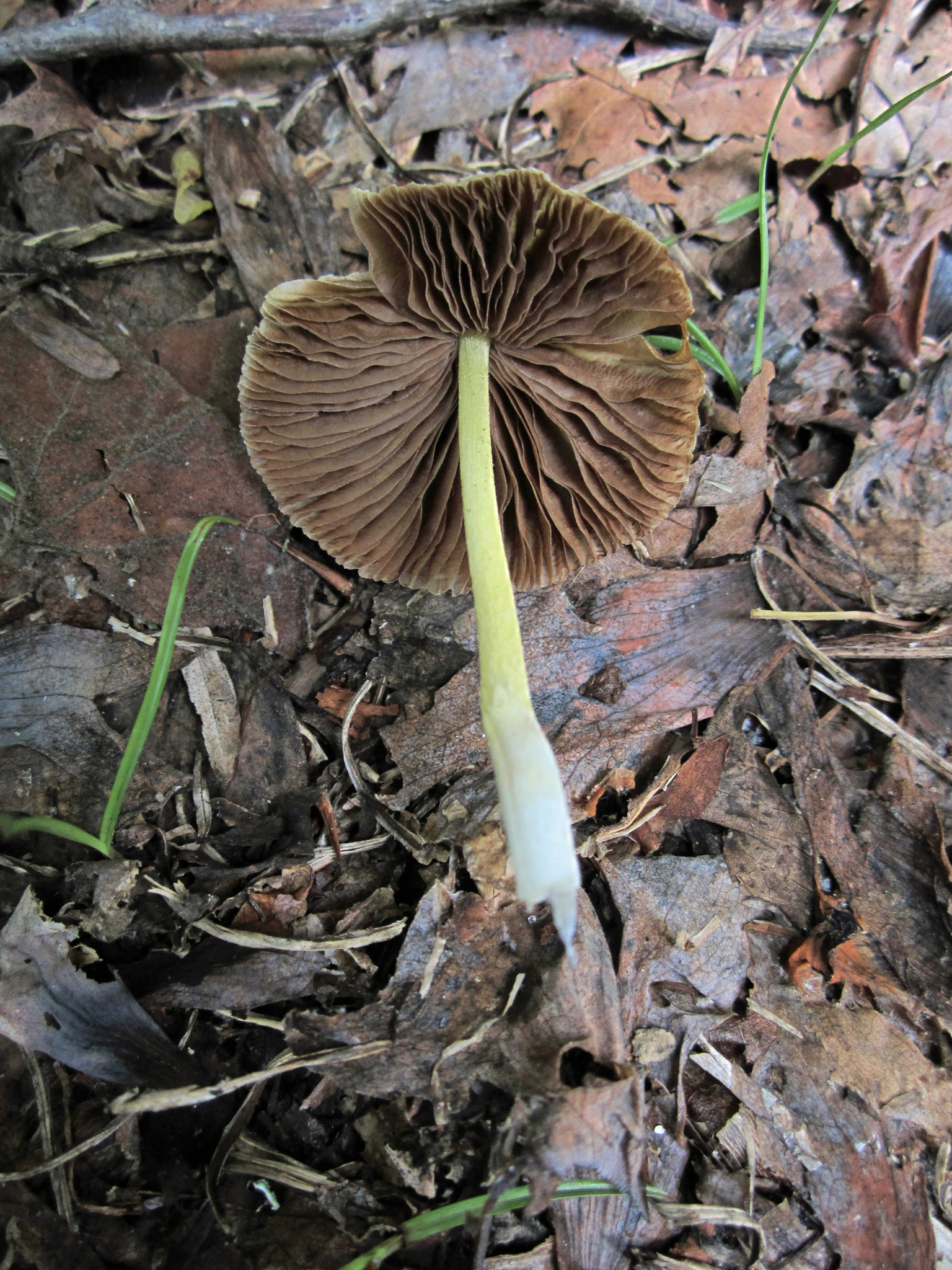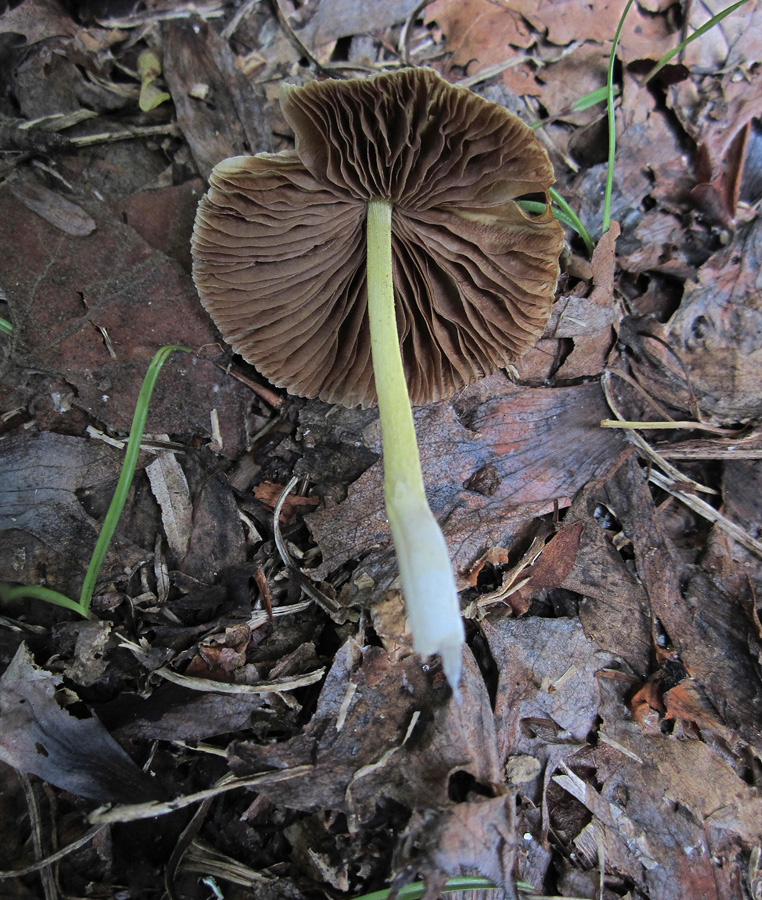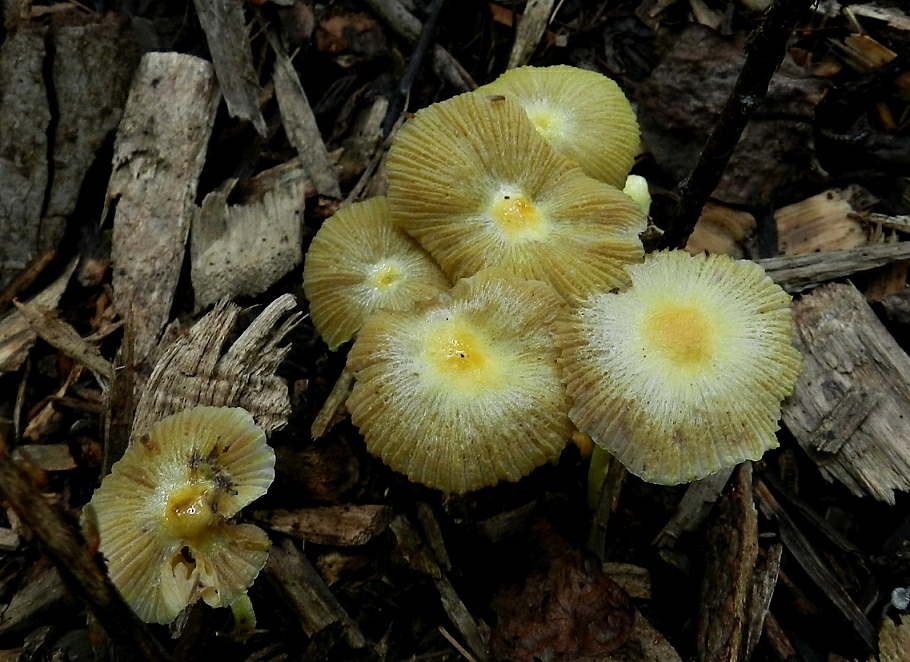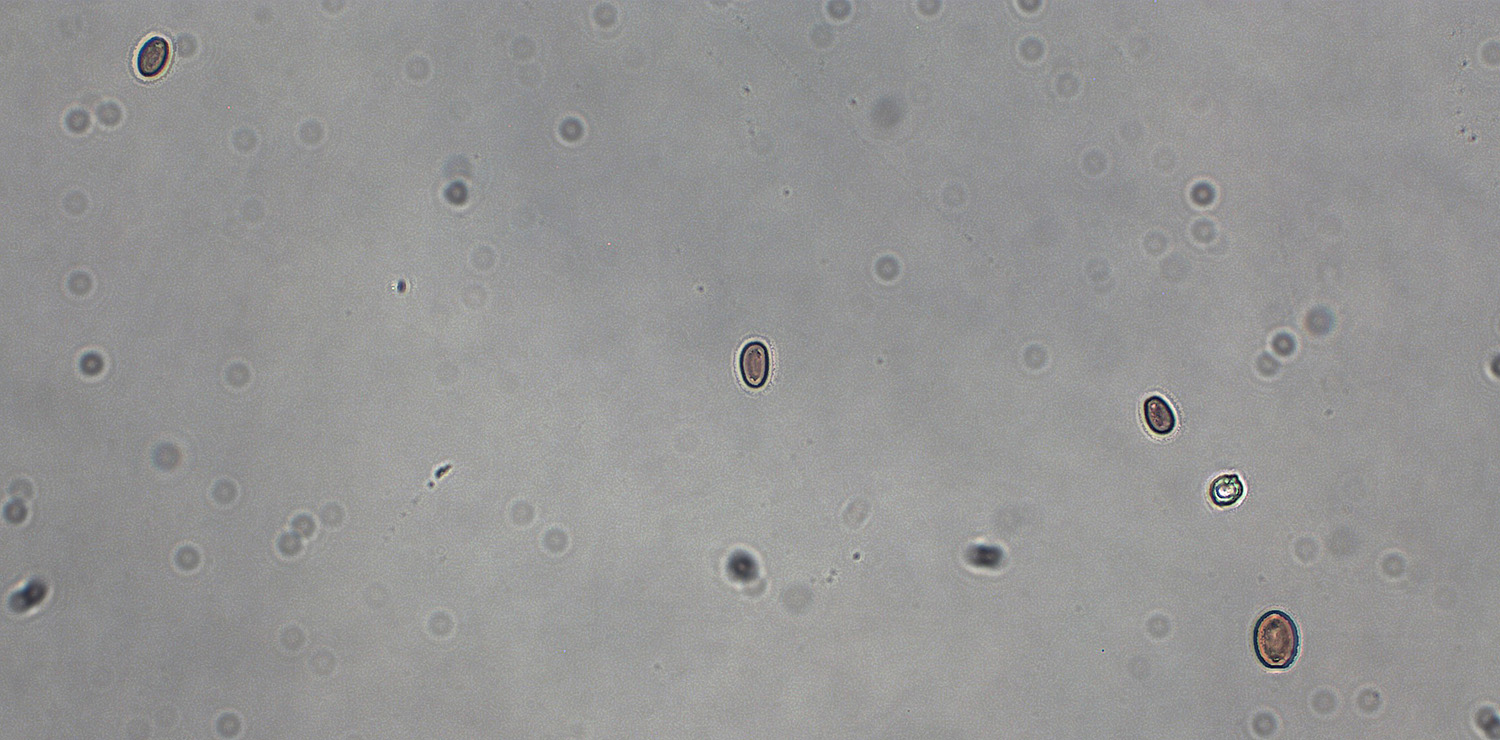Map Snapshot



14 Records
Status
Found solitary or groups in lawns, mulch, fields.
Description
Cap: Usually yellow (can be light), egg-shaped, and slimy when young; in age fading to nearly white but retaining a yellow center, becoming nearly flat and striate almost to center. Gills: Pale yellow initially, rusty-brown in age. Stalk: Pale yellow, scurfy. (J. Solem, pers. comm.)
Seasonality Snapshot
Source: Wikipedia
| Bolbitius titubans | |
|---|---|
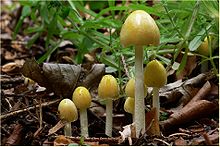
| |
| Scientific classification | |
| Domain: | Eukaryota |
| Kingdom: | Fungi |
| Division: | Basidiomycota |
| Class: | Agaricomycetes |
| Order: | Agaricales |
| Family: | Bolbitiaceae |
| Genus: | Bolbitius |
| Species: | B. titubans
|
| Binomial name | |
| Bolbitius titubans (Bull.) Fr.
| |
| Synonyms | |
| Bolbitius titubans | |
|---|---|
| Gills on hymenium | |
| Cap is ovate or flat | |
| Hymenium is adnate or free | |
| Stipe is bare | |
| Spore print is brown | |
| Ecology is saprotrophic | |
| Edibility is edible, but unpalatable | |
Bolbitius titubans, also known as Bolbitius vitellinus, and commonly known as the sunny side up[1] is a widespread species of mushroom found in America and Europe. It grows chiefly on dung or heavily fertilized soil, and sometimes on grass. It is nonpoisonous.[2]
Description
[edit]The mushroom cap is between 1.5–7 cm,[3] and grows from egg-shaped when young to broadly convex, finally ending up nearly flat.[4] The cap's color starts yellow or bright yellow, and fades to whitish or greyish with age.[5] The gills are free from the stem or narrowly attached to it, are fragile and soft, and fade from whitish or pale yellowish to rusty cinnamon with age.[4] The stem is 3–12 cm tall and 2–6 mm wide,[3] is whitish-yellow with a fine mealy powdering, and is very delicate.[6] The spores are brown, elliptical, and smooth.[3]
The mushroom's edibility is unknown but it is too small to be worthwhile.[3]
A similar species is Bolbitius aleuriatus.[3]
References
[edit]- ^ Arora, David (1986). Mushrooms demystified: a comprehensive guide to the fleshy fungi (Second ed.). Berkeley: Ten Speed Press. pp. 474–475. ISBN 978-0-89815-169-5.
- ^ Miller Jr., Orson K.; Miller, Hope H. (2006). North American Mushrooms: A Field Guide to Edible and Inedible Fungi. Guilford, CN: FalconGuide. p. 270. ISBN 978-0-7627-3109-1.
- ^ a b c d e Davis, R. Michael; Sommer, Robert; Menge, John A. (2012). Field Guide to Mushrooms of Western North America. Berkeley: University of California Press. p. 248. ISBN 978-0-520-95360-4. OCLC 797915861.
- ^ a b Kuo, Michael (February 2012). "Bolbitius titubans". Retrieved October 31, 2013.
- ^ "California Fungi—Bolbitius titubans". Retrieved October 31, 2013.
- ^ "Rogers Mushrooms — Bolbitus vitellinus Mushroom". Archived from the original on December 5, 2008. Retrieved October 31, 2013.
